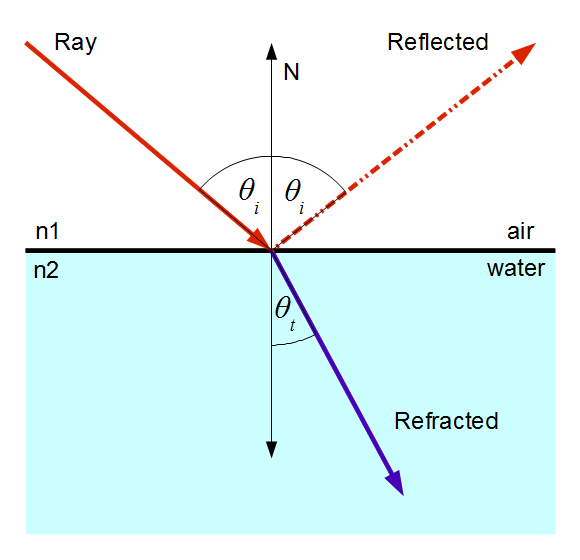What causes reflection?
1 Answer
Light is reflected when there is a mismatch between materials through which the light is travelling.
Explanation:
Light is reflected when there is a mismatch between materials through which the light is travelling. This can range from partial reflection, like a reflection from a lake surface or a window, to complete reflection, like a reflection from a mirror. The difference is in the amount of mismatch between the materials.
The property of the material we are interested in is called the Index of Refraction, and is usually denoted by the letter
 )
)
Normally the index of refraction is used to determine the angle that light propagates in a material when it "bends" or refracts, but we can also use it to calculate how much light reflects.

We use Fresnel's equations to do this calculation, after having used Snells's Law to calculate the angle of refraction.
The simplest version of this calculation is when light is propagating directly at the interface (called normal incidence where
It is clear from this that the higher the difference between the materials, the more light that will be reflected.

